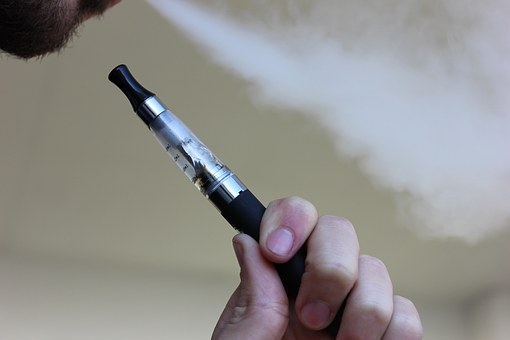As teen smoking rates drop to historic lows, e-cigarette use, or ‘vaping’ is on the rise among the young. Between 2017 and 2018, the FDA found that e-cig usage among high school students had exploded by 78%.
Companies such as Juul have long been accused of marketing their products to the young by disseminating youth-centric advertising and manufacturing flavored aerosols attractive to minors.
Here are a few story angles to help you in your reporting on the youth vaping trend.
E-cigarette ties to big tobacco
Reminiscent of vintage big tobacco ads, e-cigarette companies often portray vaping as a safer alternative to smoking tobacco. E-cigs contain fewer harmful chemicals than traditional cigarettes, but the inhaled aerosol is not without side affects. Since most vape pens contain nicotine, the habit is still addictive and has adverse effects on developing brains.
While companies like Juul have since switched their marketing strategy to smokers looking to ditch traditional cigarettes, the company has deep ties with big tobacco. Altria, the maker of Marlboro, has poured nearly $13 billion into Juul and owns 35% stake in the company.
E-cig ban hits home
San Francisco, the home of Juul Labs corporate headquarters, has just become the first U.S. city to ban the sale of e-cigarettes. City legislators voted unanimously to instate the ban, giving e-cig companies six months to sell their remaining stock before the ban takes effect.
Vermont is another state that has resorted to drastic measures in order to curb teen usage of electronic cigarettes, though stopped short of a total ban. In July, the state imposed a 92% tax on e-cig purchases. Experts say it could help stop teens from acquiring them, but the vaping industry warns that high taxes will create an untaxed and unregulated black market for e-cigarettes.
Meanwhile, Wisconsin is considering granting the e-cig company tax breaks for building a new assembly plant in Lexington.
Crackdown in schools on vaping
A school district in Nebraska has unveiled plans to scan for nicotine in drug tests of students in an attempt to curb e-cigarette use among teens. The ACLU has already come out against the proposal, arguing that since underage nicotine possession does not warrant jail time, it shouldn’t be on a drug test. School administrators however, cite the rise in teen vape use as the main reason for the new drug test standards.
Reporter’s Takeaway on youth vaping
• Do your research: examine studies and surveys done in your state to determine the size of the teen e-cig problem.
• If teen e-cig rates are low, that could also be an interesting story. Find out what factors may be contributing to the low rates. Is it due to governmental policies, demographic makeup, ad campaigns, or something else?
• How are the different approaches affecting youth vaping? It could be awhile before we fully understand which approach is the most effective. One place to gain insight however, is in how governmental PSAs played a role in curbing smoking rates.









